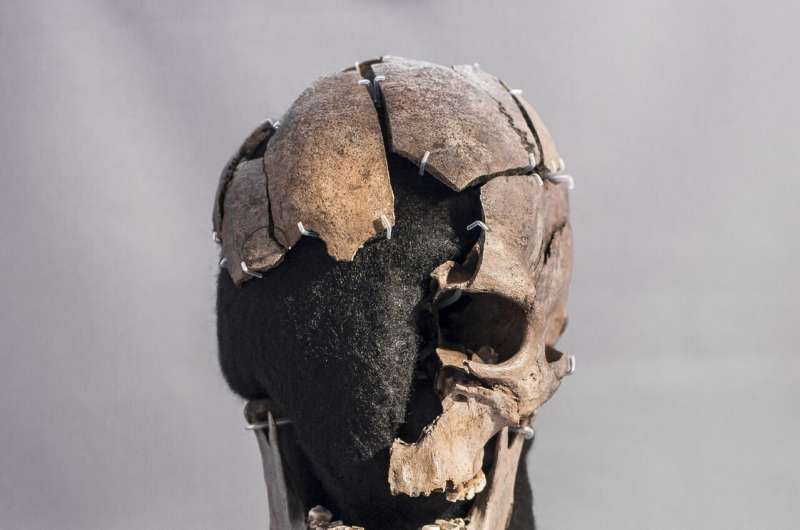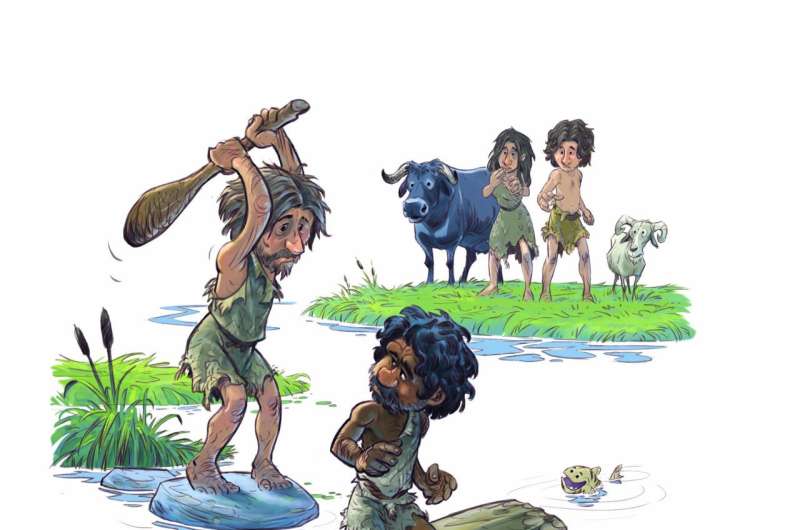This article has been reviewed according to Science X's editorial process and policies. Editors have highlighted the following attributes while ensuring the content's credibility:
fact-checked
peer-reviewed publication
trusted source
proofread
Vittrup Man crossed over from forager to farmer before being sacrificed in Denmark, study finds

Vittrup Man was born along the Scandinavian coast before moving to Denmark, where he was later sacrificed, according to a study published in PLOS ONE by Anders Fischer of the University of Gothenburg, Sweden and colleagues.
Vittrup Man is the nickname of a Stone Age skeleton recovered from a peat bog in Northwest Denmark, dating to between 3300–3100 BC. The fragmented nature of the remains, including a smashed skull, indicates that he was killed in a ritualistic sacrifice, a common practice in this region at this time.
After a DNA study found Vittrup Man's genetic signature to be distinct from contemporary, local skeletons, Fischer and colleagues were inspired to combine additional evidence to reconstruct the life history of this Stone Age individual at an unprecedented resolution.
Strontium, carbon and oxygen isotopes from Vittrup Man's tooth enamel indicate a childhood spent along the coast of the Scandinavian Peninsula. Corroborating this, genetic analysis found a close relationship between Vittrup Man and Mesolithic people from Norway and Sweden. Additional isotope and protein analysis of the teeth and bones indicate a shift in diet from coastal food (marine mammals and fish) in early life to farm food (including sheep or goat) in later life, a transition that happened in the later teen years.

These results suggest that Vittrup Man spent his early years in a northern foraging society before relocating to a farming society in Denmark. It isn't clear why this individual moved, though the authors suggest he might have been a trader or captive who became integrated into local society. Mysteries remain about Vittrup Man, but this detailed understanding of his geographic and dietary life history provides new insights into interactions between Mesolithic and Neolithic societies in Europe.
The authors add, "To our knowledge, this is the first time that research has been able to map a north European inhabitant's life history in such a high degree of detail and in such high distance of time."
More information: Vittrup Man–The life-history of a genetic foreigner in Neolithic Denmark, PLoS ONE (2024). DOI: 10.1371/journal.pone.0297032
Journal information: PLoS ONE
Provided by Public Library of Science





















